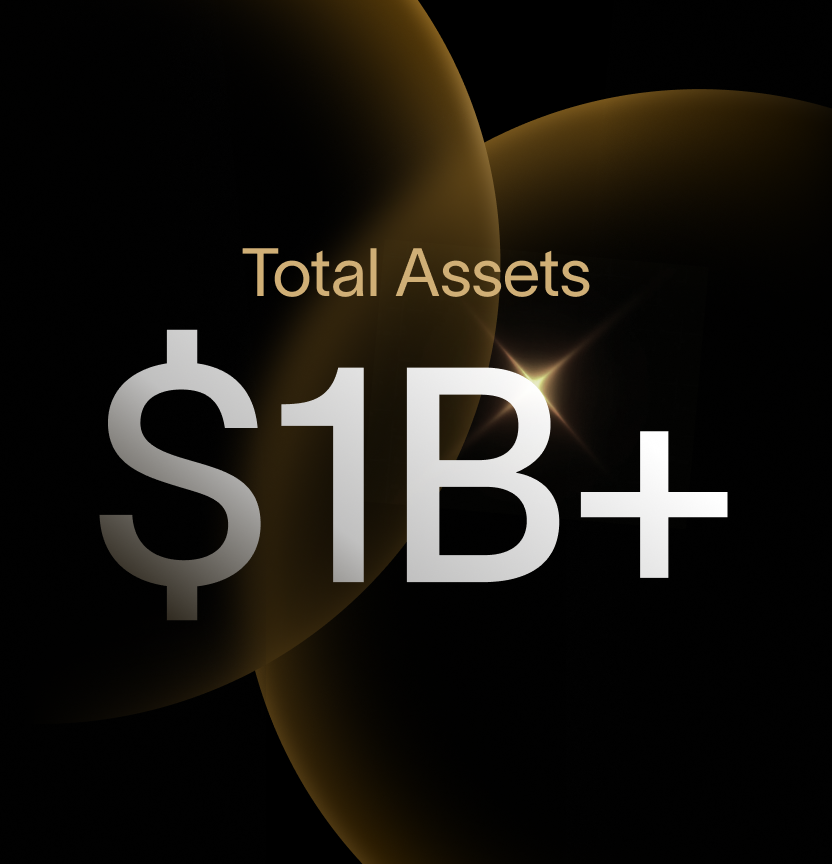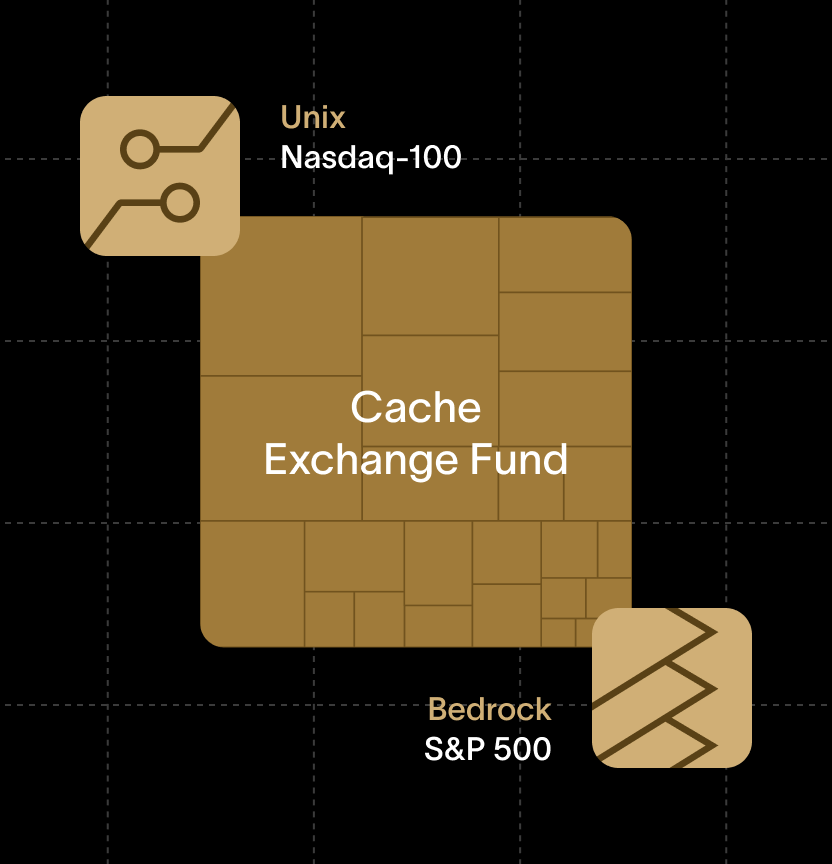List of exchange funds — providers and product details
When you hold a lot of your net worth in a single publicly traded stock, an exchange fund can be a good way to diversify your portfolio tax-efficiently. However, there can also be a lot for investors (and even advisors) to learn before they take the plunge. Most importantly: Who are the main exchange fund providers, and what do they offer?
We created a list of exchange funds so you can quickly identify potential providers. Even though each firm below offers an exchange fund, they are all slightly different from each other, so it’s worth taking a closer look. There’s the team at Eaton Vance, who brought exchange funds to the mainstream in the 1970s. Morgan Stanley, which acquired Eaton Vance in 2021, is now seen as a leading exchange fund provider. Goldman Sachs also offers exchange funds to its high-net-worth clientele. While it's difficult to determine exact numbers, it's estimated that close to $100 billion in exchange fund assets have been managed for investors with concentrated positions across major providers.
More recently, modern brokerages like Cache have joined traditional investment banks by offering exchange funds to a much broader audience for the first time. Cache also introduced a breakthrough structure called Index Sync, which enables tighter tracking goals and higher capacity by utilizing an ETF to rebalance its holdings tax-efficiently.
{{black-diversify}}
What do Exchange Fund providers do?
To understand the role of providers, it’s useful to know what exchange funds are and how they work.
In a nutshell, they allow you to pool your concentrated stock with other investors to create a diversified fund. Instead of diversifying by selling stock and triggering capital gains taxes, an exchange fund lets you and those other investors swap your stock for a pro-rata ownership share in the fund. After seven years, each investor can withdraw a diversified basket of stock from the fund. Capital gains taxes continue to be deferred until you decide to sell your stock down the road – and your cost basis will be the same as it was for the stock you contributed.
Traditional exchange funds are often beholden to the stocks they receive, and often, it is logistically extremely challenging to assemble stocks from all the sectors in the index. Cache’s innovative structure utilizes an ETF to rebalance the fund holdings tax-efficiently, allowing it to track the benchmark more closely.
To make this all happen, exchange fund managers wear a number of hats. Specifically, they:
- Identify and bring together investors with concentrated stock positions
- Set the investment objectives of the fund (typically benchmarked to a well-known index)
- Verify the eligibility of each investor
- Create allocations for each investor to build a diversified fund
- Oversee the legal and transactional elements of creating the fund
- Manage the fund toward its investment objectives
- Report performance to investors and regulators
- Facilitate transactions when shares are redeemed
Now that you know what they do, here’s a closer look at the list of existing exchange fund providers, including links to where you can learn more about each firm.
Eaton Vance Exchange Funds
Eaton Vance deserves a lot of credit for making exchange funds more widely available. While exchange funds and other like-kind exchanges have existed in some form since the 1930s, Eaton Vance obtained an IRS ruling in 1975 that allowed for wider adoption.
Following that ruling, firms like Goldman Sachs added exchange fund products as well. By the mid-2010s, these funds were only available through large investment banks, and Eaton Vance has been one of the biggest providers.
See Eaton Vance for more information.
Target Indexes: S&P 500, S&P 1500.
Morgan Stanley Exchange Funds
In 2021, Eaton Vance was acquired by Morgan Stanley. Together, they continue to offer exchange funds that allow investors to enjoy tax-deferred growth, reduce the risk of a concentrated position, and approximate the diversification and performance of broad index funds. See Morgan Stanley for more details about these product offerings.
Goldman Sachs Exchange Funds
Exchange funds from Goldman Sachs have been another way for investors to seek tax-deferred diversification. Goldman has launched over 10 exchange funds that use indices like the Russell 3000 Index to track its investment objectives.
Find more details about what Goldman Sachs provides, inquire through Goldman Sachs Asset Management or an affiliated institution.
Target Indexes: Russell 1000, Russell 3000.
Cache Exchange Funds
Cache offers a modern exchange fund built to make tax-deferred diversification accessible and affordable. Founded by a former Uber and Alphabet engineering leader who had difficulty finding ways to diversify his concentrated positions, Cache lowers the minimums and cuts the red tape that kept individuals from participating in an exchange fund.
Flagship Fund Series for Qualified Purchasers
For Qualified Purchasers ($5M+ in investable assets), Cache’s Flagship Fund Series offers three distinct exposures:
- S&P 500 Benchmark – Foundational Exposure: broad U.S. market coverage across all 11 sectors; ideal as a long-term portfolio core.
- Nasdaq-100 Benchmark – Innovation Exposure: large-cap, tech-heavy growth that captures the giants powering today’s digital economy.
- S&P 500 Growth Benchmark – Disruption Exposure: a cross-sector mix of the market’s fastest-growing companies for a focused growth tilt.
Access Fund Series for Accredited Investors
Cache also offers a Nasdaq-100 benchmarked fund to investors who meet Accredited-Investor standards (income greater than $200K, or $300K with a spouse, or net worth greater than $1 million, excluding the primary residence).
Fidelity Exchange Funds
Fidelity has a long pedigree in this space, with its original Congress Street Fund dating back to 1960. The current Fidelity Exchange Fund was relaunched in 2023.
The fund is open to Qualified Purchasers (generally $5M+ in investable assets) who invest a minimum of $250K in acceptable equity portfolios. The fund comes with a three-year lock-up, and after year 7, investors can exit into a diversified basket of at least 3-10 names.
Management fees can be 0.54% of gross assets, and are also subject to admin expenses of up to 0.50%. Some shares might be subject to a 0.25% servicing fee and a 1.5% placement fee.
For more details, including eligibility and contribution requirements, please consult with Fidelity's team.
Target Index: S&P 500
Comparing Exchange Fund Providers
Here are a few points of comparison across traditional providers and newer providers like Cache:
<p class="blog_disclosures-text">The data for the key terms of other exchange fund providers are sourced from certain large institutional providers of exchange funds which Cache believes to be relevant competitors for its own exchange fund. However, key terms are not meant to be representative of any particular competitor or other provider of exchange funds. Cache makes no representation as to the accuracy of this information nor does Cache create an implication that such data has been updated as of any particular time from when such data was originally sourced.</p>
How to Choose an Exchange Fund Provider
Exchange funds are a long-term investment for sophisticated investors. They can have a huge impact on your net worth, so it’s a good idea to do your research.
If you’re looking to reduce concentration risk by diversifying and you want to avoid tax drag on appreciated stock, these funds could be a useful tool for meeting your investment objectives. Goldman Sachs, Eaton Vance, Morgan Stanley, and Cache all offer slightly different approaches to exchange funds, so it may be worth talking to a financial advisor about which is best for you. Here’s a list of key questions to ask an exchange fund brokerage you’re considering:
- What is the minimum investment?Who is eligible?
- What’s your investment strategy – and which stocks does the provider look for?
- What are all the fees and expenses can I expect to pay when I’m invested in an exchange fund?
Note that the seven-year holding period is based on current tax regulations, so you’ll have the same long-term commitment with every exchange fund provider.
How is Cache different?
- Predictable, real-time capacity: Check capacity online and get matched to a particular close. With bi-weekly closes and multiple funds, you’ll see fewer “fund is full” surprises.
- Tighter tracking goals: Our unique ETF rebalancing mechanism enables us to track the target benchmark more closely over time, allowing us to adjust to index changes.
- Lower entry points: Investors can get started with $100K in one or more stocks. We offer funds to both Accredited Investors and Qualified Purchasers.
- Streamlined onboarding: A digital workflow backed by white-glove support replaces weeks of manual paperwork.
- Transparent, competitive pricing: Annual management fees range from 0.40% to 0.95%, dropping to 0.25% after the seven-year holding period, and there are no sales loads.
If there’s anything we can do to answer your questions or assess your eligibility for the Cache Exchange Fund, we’d be happy to talk. To start the conversation, just tell us a little more about your situation.
Disclosures
<p class="blog_disclosures-text">Material presented in this article is gathered from sources that we believe to be reliable. We do not guarantee the accuracy of the information it contains. This article may not be a complete discussion of all material facts, and is not intended as the primary basis for your investment decisions. All content is for general informational purposes only and does not take into account your individual circumstances, financial situation, or your specific needs, nor does it present a personalized recommendation to you. It is not intended to provide legal, accounting, tax or investment advice. Investing involves risk, including the loss of principal.</p>
<p class="blog_disclosures-text">Exchange funds are a passive investment vehicle designed to provide diversified exposure. They do not guarantee higher returns than their underlying stocks, and they are likely to fluctuate with market conditions. While exchange funds may be designed to track an index fund or ETF, it should also be noted that fund managers have limited ability to sell stock positions and rebalance the fund. Diversification reduces concentration risk, but it does not eliminate investment risk completely. It is still possible to lose principal when you participate in an exchange fund.</p>
<p class="blog_disclosures-text">S&P 500 Index: a market capitalization-weighted index composed of 500 leading U.S. publicly traded companies widely regarded as a gauge of the large-cap U.S. equities market. S&P Growth Index: tracks the performance of U.S. large- and mid-cap companies with higher forecasted growth rates, including companies with higher price-to-book ratios and expected earnings growth. Nasdaq-100 (NDX) is a stock market index made up of equity securities issued by 100 of the largest non-financial companies listed on the Nasdaq stock exchange. Broad-based securities indices are unmanaged; investments cannot be made directly into an index.</p>
<p class="blog_disclosures-text">“Index Sync” refers to the Cache Exchange Fund strategy of making indirect investments in Exchange-Traded Funds (ETFs) sponsored by third parties that are unaffiliated with Cache. These ETFs track broad-based securities indices. This approach enables certain Cache-sponsored Exchange Funds to gain exposure to a larger and more diversified investment portfolio than could be achieved by holding contributed securities directly.Cache primarily seeks to achieve its investment objectives by constructing a diversified portfolio of equity securities that reflect the risk and return characteristics of a broad-based index. The Fund also invests in Qualifying Assets, as defined in greater detail in the offering document; these investments may include real estate, private funds, or other investments consistent with Exchange Fund requirements—all Exchange Funds, including. Cache’s Exchange Funds also includes additional operating expenses, which are disclosed in the offering documents.</p>
Detailed Info
Detailed Info
Detailed Info






























